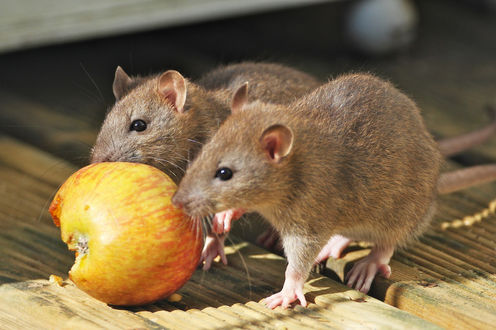
Our world is becoming increasingly urbanised. In 1950, just 30% of the world’s population lived in urban areas. This number is now over 50% and rising.
By 2050, two-thirds of the world’s population are expected to be urban dwellers. Although much of this growth will occur in developing regions, northern Australian cities are likely to see significant expansion.
The successful growth of cities will undoubtedly be critical to the economic health of Australia and the surrounding region. However, the increasing size and density of human populations are creating challenges for human health.
A CSIRO report published today, Australia’s Biosecurity Future: Preparing for Future Biological Challenges, highlights the biosecurity risk of urbanisation as cities become hotspots for new and emerging infectious diseases.
Animal hosts
The number of emerging infectious diseases that infect people has more than tripled since the 1940s. Around two-thirds of these are zoonotic, which means that they have spilled over into human populations from animals. The number of emerging diseases is likely to continue to increase, driven by the globalisation of travel and trade, climate change and, of course, urbanisation.
Urbanisation modifies the environment rapidly and permanently, creating irreversible changes in biodiversity. Animal species that can adapt to disturbed or fragmented environments (urban adapters) or thrive when living closely with people (urban exploiters) will prosper in cities. But those that cannot adapt (urban avoiders) may die out. This process contributes to the reduced biodiversity seen in urban environments.
In Australia, urban adaptors include familiar species such as the noisy miner bird and the common brushtail possum, while urban exploiters are often invasive species, such as rats and pigeons.

The high prevalence of urban adapters/exploiters in city environments means people may be at risk from the diseases they carry. Possums have already been identified as potential sources of zoonotic bacteria in drinking water in Australia, while rats have been associated with many zoonotic diseases, including leptospirosis, toxoplasmosis, the plague and hantavirus infection.
Insects, such as mosquitoes, also differ in their ability to colonise urban environments. Mosquitoes that breed in small amounts of standing water and prefer to feed on humans are often abundant in urban environments. They have been instrumental in the emergence and spread of viruses like dengue and Chikungunya.
A warming climate is predicted to increase the geographic range of some of these urbanised mosquitoes. Growing cities will increase the number of people at risk from the diseases they carry.
Animal-to-human transmission
Why some diseases spill over from animal to human populations while others do not depends on many factors, including the genetic, cellular and behavioural characteristics of the pathogen, animal and human host.
Although scientists are still trying to unravel the complexity of this process, we do know that the frequency of contact between animal and human populations is a significant contributor to the probability that cross-species transmission occurs.
Processes such as deforestation and urbanisation can change the way human and animal populations interact. Land-use changes such as these have been associated with the emergence of many significant zoonotic diseases, including dengue, malaria, severe acute respiratory syndrome (SARS) and Ebola.

Although we tend to focus on pathogens that have successfully jumped species to transmit and cause disease in a new host (such as dengue and SARS viruses), most cross-species transmission events go no further than the first infected individual. In these cases, which include hantavirus and rabies virus infection, people are dead-end hosts.
It is not yet clear why some zoonotic pathogens are able to cause sustained human disease, while others are never transmitted between people. We need to unravel the complex interactions between pathogens, their hosts and the environment to begin to predict which diseases carried by animals pose the greatest threat to human health in an increasingly urbanised world.
Reducing the risks
Zoonotic disease outbreaks place significant burdens on public health systems, as well as on local and global economies. Despite the relatively localised scale of the current Ebola outbreak, the World Bank is forecasting costs as high as US$33 billion by the end of 2015, a number approaching the estimated US$40 billion price tag of the SARS epidemic.
Given the extraordinary costs associated with outbreak response and control, it is clear we need to focus on prevention and surveillance to reduce the incidence of emerging infectious diseases in the future.
Despite the challenges of an increasingly urbanised world, the concentration of people in cities also provides opportunities to reduce and control new and emerging infectious diseases. Compared with rural areas, the centralisation of money, power and knowledge can greatly improve surveillance and intervention measures in cities. This includes increasing access to clean drinking water, improved sanitation and urban flood reduction.

City dwellers also often have greater access to mass media than people in many rural areas. This provides a platform for public health campaigns aimed at increasing awareness of behaviours that reduce the risk of acquiring infectious diseases. These include the importance of vaccination, hand-washing, insecticide use and waste management, among others.
Taking steps to improve urban disease surveillance, developing effective prevention measures and initiating appropriate education campaigns will allow us to significantly reduce the impact of emerging infectious diseases.
The authors do not work for, consult to, own shares in or receive funding from any company or organisation that would benefit from this article. They also have no relevant affiliations.
